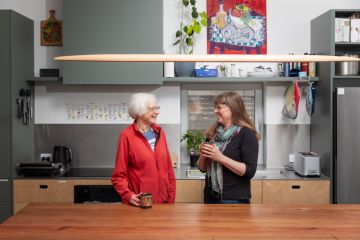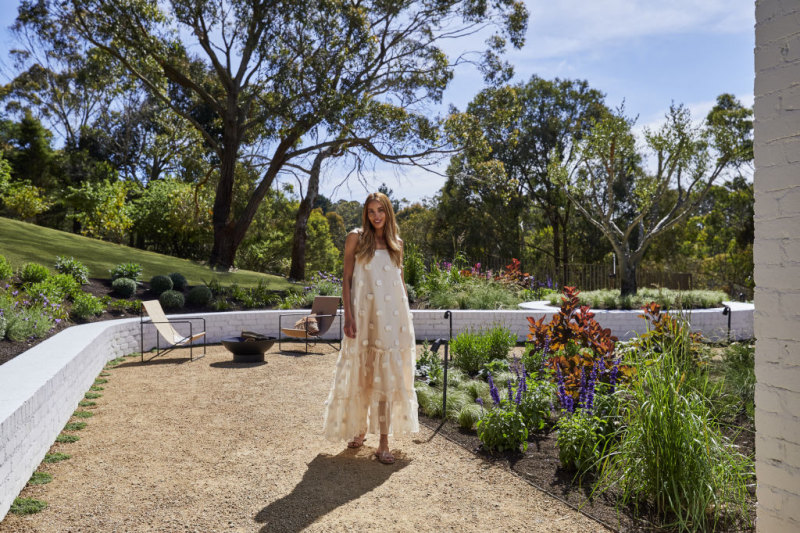The pros and cons of working with a residential architect

Engaging an architect to design your home can be an expensive undertaking, with most architects charging fees between nine and 15 per cent of the overall construction cost.
Architect Amelia Lee is the founder of Undercover Architect, a service that helps homeowners (women in particular) to make informed decisions regarding designing, building and renovating.
“I don’t push people to use an architect … I seek to inform homeowners what the options are and equip them with the tools to make the most suitable choice for them,” Lee says.
“As with any industry, there are brilliant architects, and there are those who are not so great …You have to do your homework and find a good fit for you,” she says.
Lee believes the main reasons to use an architect are support, design knowledge and for improving homeowners’ quality of life.
“Engaging an architect who you trust, who shares your values and listens to you, and who has a demonstrated ability to expand your vision and create a home that suits your budget, your site and your life, will always add far more value than the cost of their fees,” Lee says.
“Your home can and should make your life better, and it’s in the design work that this potential is unlocked.”
Unlike a draftsperson who is generally engaged to draw already made plans, a good architect will challenge their client to reveal a home’s untapped potential.
“Expect an architect to interpret your aspirations, ideas, needs and wants and potentially challenge you,” Lee says.
“Expect an architect to create a design that brings your brief and how much you want to spend into alignment with each other. Expect them to advise you when your aspirations don’t meet your budget.”
Even homeowners seeking a “simple” design are likely to benefit from an architect’s work.
“Think of some of the best designed objects you know – the iPod, the Post-it, the safety pin; each would have started with a fairly uncomplicated requirement or desire,” Lee says.
“But the design of them, the work that’s gone into creating them to be as great as they are, that’s great design.”
While having similar taste and design aesthetics is imperative to any architect-client relationship, the parties should also be a good fit personality wise.
“They will be in your life for some time, and you’ll be having some intimate conversations with them about your home and finances, so it’s important you can feel you can communicate easily, be listened to, and sense you’ll be supported and guided well,” Lee says.
“They can then also be invaluable in supporting you through the process as your agent on site, ensuring you get what you’re paying for.”
Designer Katrina Malyn of Design Projector believes the decision to use an architect varies on a case-by-case basis.
“There is a lot of enjoyment and sense of fulfillment in designing your home,” Malyn says.
“The only risk is, if you have a designer’s streak, you might be not very happy with your own design purely because you haven’t done your 10,000 hours of design. You might have the taste but the skill may be not at the same level.”
Michelle Schmidt chose to engage architect Leon Moulton to design her family home in Melbourne’s Albert Park.
Schmidt met with two other architects before deciding Moulton was the right fit for her home.
“As first time renovators we were really in the dark as to how it all works … we really needed someone that we felt very comfortable with,” Schmidt says.
“Then we met Leon who immediately made us feel comfortable, wanted to know our personalities, likes, dislikes, our family and our vision for our home.”
Moutlon charged a set fee for the project and allowed this to be paid in several instalments over the build.
“Importantly, he emphasised that we would be building a home that we could enjoy for years to come; not a house that looked good and wasn’t practical.”
The 350-square-metre block has since been reconfigured to fit “everything we possibly could” into the space including four bedrooms, a “kids’ cave”, pool, a sunken lounge and storage space.
“Leon loves large sliding doors and these have created spaces that can be multi- purposeful (ideal for when our children grow into teenagers!),” Schmidt says.
“I see the role of the architect being someone who can bring someone else’s dreams alive.”
We recommend
We thought you might like
States
Capital Cities
Capital Cities - Rentals
Popular Areas
Allhomes
More
- © 2025, CoStar Group Inc.







